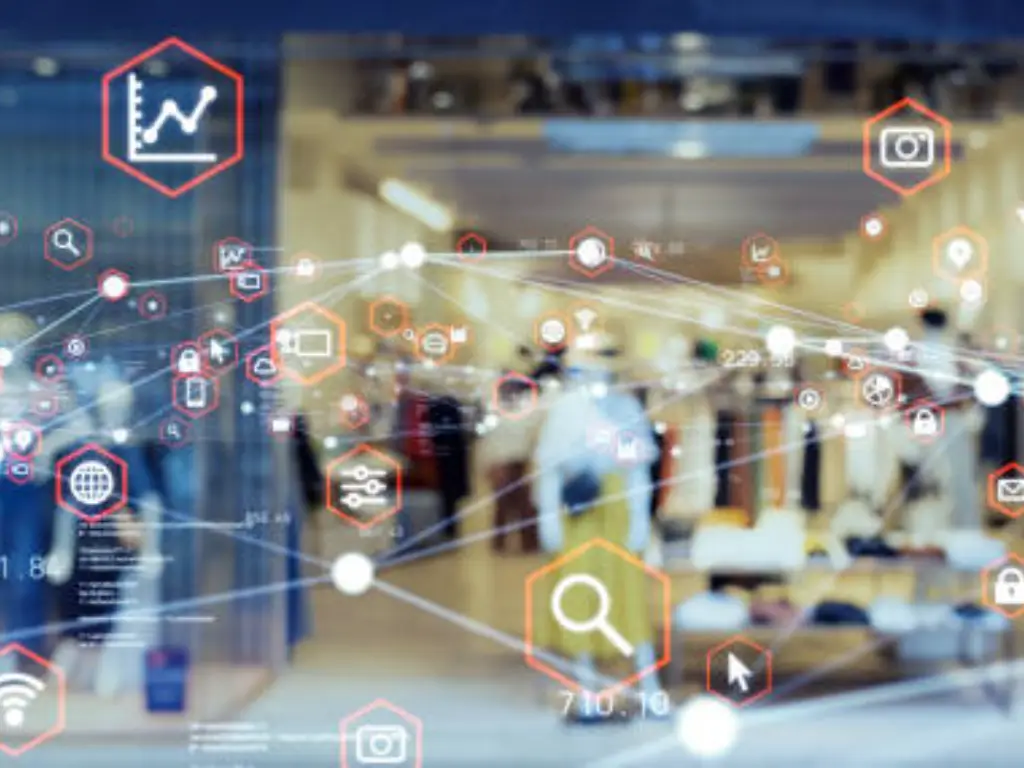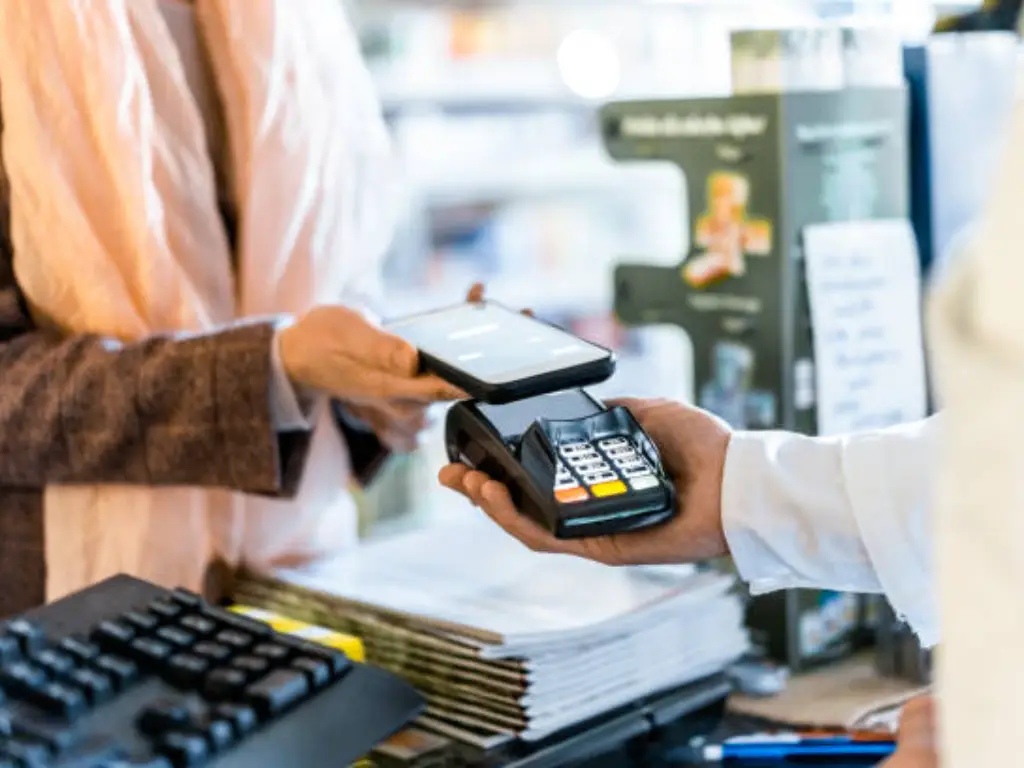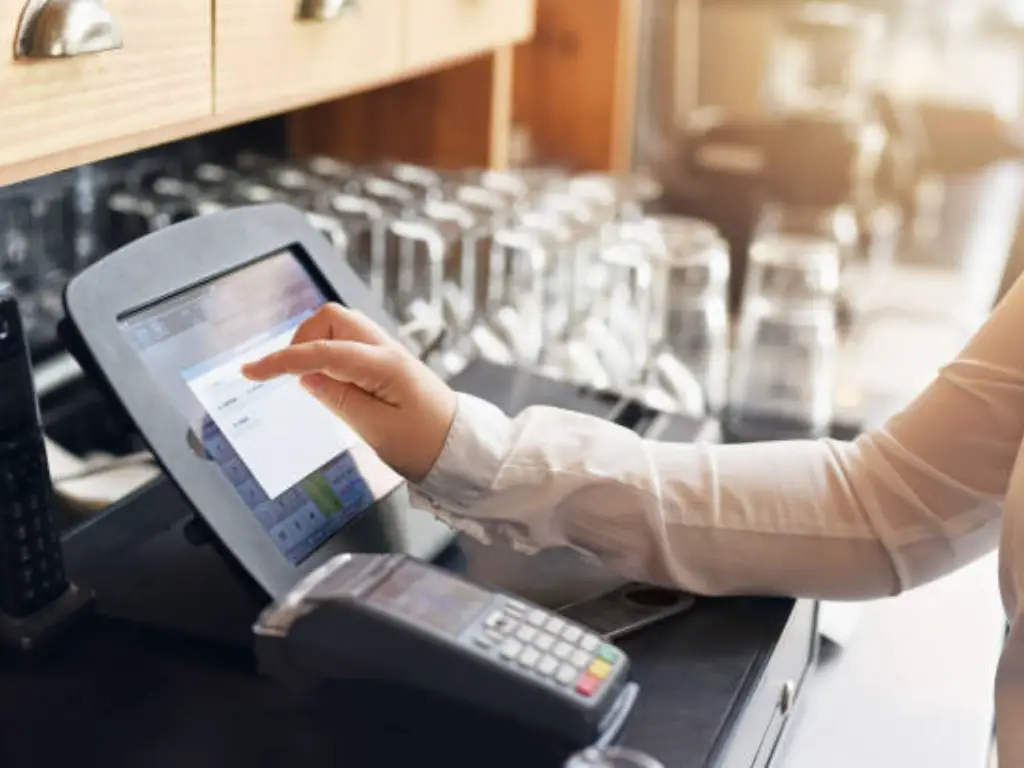The modern retail and hospitality industry does not just require operational efficiency as a benefit; it is a survival requirement. Business leaders are finding that a patchwork of systems and manual labor has become no longer sustainable liabilities. They are operational profit killers, employee spirits, and customer satisfaction, especially during peak hours. Central to this operational complexity is the integrated Point of Sale (POS) system, which has transformed itself over the years to become the nervous system of a contemporary business.
This guide offers a detailed structure of how to comprehend and execute POS integration. We will unpack the expense of operational inefficiency, outline the fundamental values of an integrated ecosystem, and offer a strategic plan of implementation. We will also discuss the next frontier of this technology, which is to automate the back office, and take it to the sales floor itself, and finally plot a path towards a truly unified commerce model, which will support both online stores and offline channels.

Why Manual Operations Are Costing Your Business
It is important to diagnose the problem before proceeding to the solution. To most companies, the daily use of manual processes has become so embedded that its actual cost is invisible. Such expenses, however, are significant and are reflected in various important aspects.
The first cost is the most immediate labor. Think of the day-to-day activities that waste precious time in your team: a shop manager entering sales data recorded in a POS report into an accounting spreadsheet; an online store manager comparing online store sales to a different inventory list in a brick-and-mortar store; one of your employees taking hours to walk the floor to update paper price tags during a weekend sale. According to industry analysis, workers in non-automated settings are spending 5 to 15 hours a week on activities that can be entirely automated. In the case of a small team of three, that may amount to more than 2,000 hours of lost productivity annually, which might have been used to interact with customers, plan strategically, or develop the business.
Other than direct labor, human error is also a huge financial burden. One wrong digit in the process of reconciling accounts can cause hours of forensic accounting to determine the source. A mistake in the price of a popular product can result in significant losses or, in case of the customer’s disadvantage, reputation and possible fines. With manual inventory, the chances of stockouts and overstocking are increased. An out-of-stock of any popular product is a direct loss of sales and may drive a loyal customer to a competitor. On the other hand, overstocking locks up essential working capital in unsold inventory, raising carrying costs and the danger of obsolescence.
Lastly, we have the opportunity cost. When managers and business owners have to be caught in the details of manual data management, they are deprived of time and cognitive capacity to do strategic work. They are exporting CSV files instead of using customer behavior and transaction data to make purchasing decisions. They are working out inventory shortages instead of coming up with new marketing plans. The inability to concentrate on growth is maybe the greatest cost of all in today’s fast-paced market.
Understanding POS Integration and Its Core Benefits
POS integration is a strategic means of developing a smooth, two-way communication channel between your integrated POS system and other business-essential software systems. These systems are interconnected rather than being isolated islands of data, and information exchange helps create a unified view, happening automatically and in real time. This forms a seamless technological environment where a move in one system provokes a suitable, automated response in another.

As an example, selling a product via the POS in a store, an integrated system will update the main inventory level, send the sales information to the accounting software, and collect the data by recording the purchase in the profile of the customer in the CRM. The gains of such interconnectedness are revolutionary.
- Automated Data Synchronization: It is the basic advantage. It removes the requirement of manual data entry between systems, which saves labor hours significantly, and the staff can be allocated to more valuable work. All the related platforms operate on the same, real-time information.
- Reduced Human Error: Eliminating manual keying and reconciliation, the possibility of expensive accounting, inventory, and order fulfillment errors drops off the scale. Integrity of the data is maintained throughout the business.
- Real-Time Inventory Visibility: A unified system will give a single, correct inventory picture of all sales channels, such as brick-and-mortar stores and online stores. This is the essential facilitator of the contemporary omnichannel shopping experience, such as Buy Online, Pick up In-store (BOPIS), and it eliminates the possibility of overselling online an item that is out of stock in the warehouse.
- A Single Source of Truth for Sales Data: Decision-makers have access to integrated, trusted sales information across all channels. This enables better prediction, smarter buying, and better insight into business performance without having to manually create reports across several sources.
- Improved Customer Experience: POS integration has a direct effect on the customer. Having a single picture of customer data, employees will be able to offer more personalized service. Correct inventory data translates into fewer disappointments. Efficient operations mean quicker checkouts and easier after-sales.
Key Systems to Integrate with Your POS
An effective integration plan aims at linking the POS with the platforms that are most important to your particular business procedures. The possibilities are enormous, but the following categories are the most critical integration points of most retail and service businesses.
E-commerce Platforms
In any business that has a physical store and an online store, combining POS with an ecommerce platform (e.g., Shopify, BigCommerce, Magento, WooCommerce) is a must for providing a seamless omnichannel shopping experience. This connection is the core of any omnichannel strategy. The integration harmonizes product data (description, pricing, images), inventory quantity, sales orders, and customers. Once a sale occurs online, the stock is reduced in the main system, and a customer in the shop cannot purchase the same item. Conversely, an in-store sale updates the stock level shown on the website in real-time.
Payment Methods and Payment Processing
The new generation of consumers demands checkout flexibility. By incorporating your POS solution with various payment channels such as credit cards, debit cards, digital wallets, and even the new payment channels, you simplify the transaction process. This makes the processing of orders accurate and enhances customer satisfaction. Modern payment processing systems minimize errors and delays in settling a transaction and also offer useful data on transactions, which can be used to make business decisions.

Accounting Software
Connecting your POS to accounting software (e.g., QuickBooks, Xero, Sage) automates one of the most tedious and error-prone back-office tasks. The daily sales information is posted automatically into the general ledger, such as revenue, tax collected, method of payment (cash, credit), and discounts. It removes hours of manual work, keeps financial reports up-to-date and accurate at all times, and makes tax preparation much easier.
Inventory Management Systems
Although a lot of contemporary POS systems include powerful inventory functionality, complex businesses (with more than one warehouse, complicated supply chains, or sophisticated purchasing needs) frequently employ dedicated inventory management systems. The combination of the POS with these platforms means that sales information is immediately communicated to the central inventory ledger, which can automatically generate a purchase order when the inventory level reaches a pre-determined level, streamlining the whole supply chain and improving delivery services.
Customer Relationship Management (CRM)
When you connect the POS with a CRM platform (e.g., Salesforce, HubSpot, Zoho CRM), it will help you learn more about your customers across different platforms. Any purchase that a client makes in the store is recorded automatically in their CRM profile. This creates a history of their buying behaviors, likes, and lifetime worth. Such data can be used to build personalized email marketing campaigns, loyalty programs, and enable sales associates to deliver a more informed and personalized customer service experience.
A Strategic Roadmap to Seamless Integration
A POS integration project should be undertaken systematically. A laid-out plan will reduce interference, contain expenses, and, lastly, the end product will be a perfect fit with your business goals.
Step 1: Assess Your Business Needs and Goals
Examine yourself before examining any technology. Which operational bottlenecks are the most important in your business? Do you have a problem with inventory accuracy? Does financial reconciliation take too much time? Set clear objectives that can be measured. An example of a goal could be to cut down the time used on manual accounting by 80 percent or to do away with the stock differences between our online and actual stores. Most importantly, the evaluation must not be restricted to software processes but also to real-life in-store processes. Find out where the manual activities are causing friction on the actual sales floor.

Step 2: Audit Your Existing Technology Stack
Make an elaborate list of your existing systems. Which POS software do you use? Which e-commerce? Accounting software? Record their versions, prices, and above all, their integration ability. Do they possess well-documented Application Programming Interfaces (APIs)? This audit will show whether your existing tools can be included in the solution or should be changed.
Step 3: Choose the Right POS and Integration Tools
Now you have your goals and audit in hand, and you can research solutions. Choose platforms that have a track record of being open and flexible in architecture and simple to use when making a POS system or integration middleware selection. A well-documented, stable API will help you scale in the future and leave the door open to using more sophisticated tools and hardware in the future. Do not use closed and proprietary solutions that restrict your integration opportunities.
Step 4: Plan for Data Migration and Testing
It is an important step that is usually overlooked. What is your plan to move historic product, customer, and historical sales information into the new system? Work out an effective data migration strategy. The integrated system needs to be strictly tested in a sandbox before going live. Test transactions across all channels, ensure that information flows properly to all systems connected, and ensure reports are correct.
Step 5: Train Your Team and Go Live
Technology is as good as the people who use it. Train all employees thoroughly and make them aware of the new working processes and advantages. The risk can be mitigated by a phased rollout, which may begin with one location or channel. When the system is stable and the team is sure, then you can implement the complete launch.
Next-Level Integration: Connecting POS to Electronic Shelf Labels
After you have successfully integrated your backend software, a new reality usually appears. You have built a very efficient, automated data ecosystem in the back office, yet a major gap exists: the automation last mile. Your employee continues to print paper labels, walk the aisles, and replace tags manually on the shelf. Lastly, physical connection in the chain is still slow, labor-intensive, and error-prone.
The real automation of the operation is supposed to run through the display and the database. This is where the combination of your POS system with Electronic Shelf Labels (ESLs) revolutionises the whole retailing formula. This is achieved by linking your central system to the digital tags on the shelf, which in turn display the price changes, promotions, and important stock details in a real-time and precise manner, bridging the automation gap without a second thought.
When considering such a solution, it is crucial to evaluate it based on its ability to deliver a genuinely intelligent and future-proof system.
- Prioritise Open, Seamless Connectivity: A modern ESL solution must be built on a foundation of interoperability. Find systems that have an open API/SDK or can use standard communication protocols such as MQTT. This will mean that the ESL platform will be able to talk perfectly with any modern POS system to provide real, real-time updates and not nightly batches.
- Scrutinise the Software and Security Model: The cost of ownership is the most important. Ask about the software licensing scheme. A vendor who will provide a purchase of software once with lifetime free updates will be able to cut operational costs by half in the long run. Additionally, a private, on-premise deployment is an essential security capability of any business that cares about data sovereignty; in case of such a deployment, your fundamental commercial data will stay under your full control.
- Look Beyond Price Synchronisation: Basic price updates are merely table stakes. An intelligent system can do more. Find the solutions that rely on the ESL as a touchpoint. This involves the use of on-label QR codes to connect the online and offline world and connect the customer to the product review, video tutorial, or online-only offers. Cutting-edge platforms are even going into integration with AI camera-based systems to allow dynamic pricing depending on current foot traffic or even competitor analysis.
- Evaluate the Hardware Itself: The physical label is your brand’s touchpoint on the shelf. The hardware has to be trustworthy, power-saving, and aesthetically stimulating. Such innovative four-color displays (black, white, red, and yellow) can accommodate much more visually appealing and convincing promotional messages than the three-color labels do. The power consumption must be extremely low, as must be the quality of the build to ensure a long and maintenance-free life.















Common Integration Pitfalls and How to Avoid Them
The way towards a completely integrated system is full of possible pitfalls. The first step to preventing these pitfalls is awareness of their existence.
| Pitfall | Impact | Mitigation Strategy |
| Choosing a Non-Scalable POS | Your system cannot grow with your business. Adding new locations, channels, or integrations becomes impossible or prohibitively expensive. | Select a POS with a proven track record, a robust API, and a clear product roadmap. Prioritize flexibility over a narrow feature set. |
| Ignoring API Documentation | Developers struggle to connect systems, leading to project delays, increased costs, and unstable, buggy integrations. | Before committing, have a technical resource review the API documentation. It should be clear, comprehensive, and well-supported. |
| Underestimating Data Mapping | Data fields from different systems (e.g., “SKU” vs. “Product_ID”) do not align, leading to corrupted data and failed synchronizations. | Conduct a thorough data mapping workshop during the planning phase. Document every data point and its corresponding field in the new system. |
| Failing to Secure Connections | Sensitive customer and financial data transmitted between systems is vulnerable to interception and breaches. | Ensure all API connections use modern encryption standards (e.g., TLS 1.2 or higher) and employ robust authentication methods like OAuth 2.0. |
| Forgetting the Physical Storefront | Backend automation is achieved, but in-store operations (like price changes) remain manual, inefficient, and error-prone, limiting the ROI. | Extend your integration strategy to include the sales floor. Evaluate and incorporate in-store automation tools like ESLs from the outset. |
Conclusion: The Future of Unified Commerce Technology
The power of POS integration is all good, but it is just a stepping stone to something far greater: Unified Commerce. Where omnichannel was focused on consistent experiences across the siloed channels, unified commerce is the destruction of silos altogether. It is constructed on one platform where all customer, product, order, and inventory information can be found and is used by all channels as the source of truth.
The unified model is the building block of the future of retail. Consider the situation when a retail environment is driven by a central IoT platform. Instant execution of dynamic pricing is done through the implementation of AI algorithms that analyse real-time sales and customer behaviour during peak time and propose dynamic pricing, which is then implemented on the shelf through ESLs within seconds. A customer who views a product in their mobile app will be provided with a personalized offer a few moments later when they enter the retail store. Inventory is not merely a number in a database; it is a live data point that drives the automation of re-ordering as well as what is shown on a digital sign.
This is not a vision of the future; this is where the industry is headed in a hurry. Your future, in terms of competing in this intelligent, data-driven, and highly customer-centric world, will depend on the strategic integration decisions you make today, enabled by flexible software solutions and high-powered e-commerce integration capabilities.

